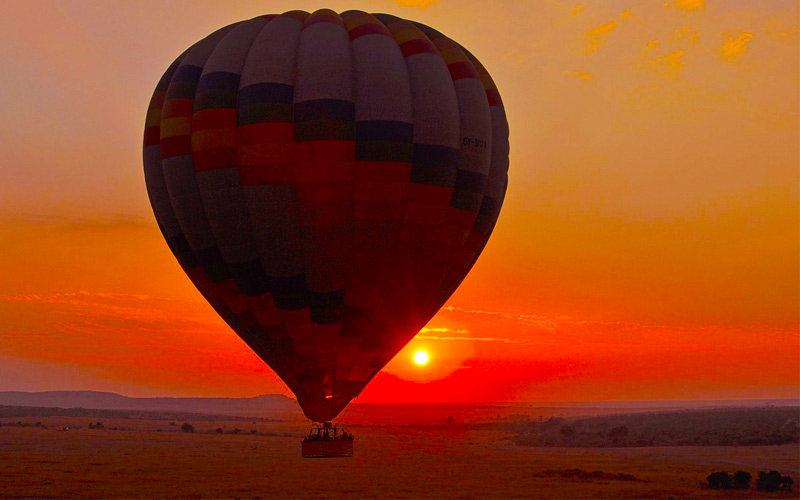Travelling to your dream safari destination often involves long hours in a safari vehicle and catching small chartered flights. Not only are there strict weight limits on these flights, but lugging a heavy suitcase around will quickly become tedious.
I learnt that lesson the hard way on my very first safari. But after doing it a few more times afterwards, I now have a better idea of only packing some of my creature comforts and the bare essentials.
As you eagerly plan your trip, my safari packing list for Tanzania below will ensure that you are prepared and fully equipped for this once-in-a-lifetime experience.
My Quick Takeaways:
Packing for a Tanzanian safari? Here's what you need to know at a glance:
Clothing Essentials:
- Pack comfortable, breathable clothing in neutral colours; include both short and long-sleeved shirts, trousers, and a warm jacket for cooler mornings and evenings.
Footwear:
- Opt for lightweight, comfortable walking shoes suitable for uneven terrain.
Accessories:
- Don't forget a hat, sunglasses, and a scarf to protect against the sun and dust.
Health and Hygiene:
- Bring insect repellent, sunscreen, personal medications, and baby wipes for convenience.
Technology:
- Carry a camera with extra batteries, a power bank, and a travel adaptor to capture and power your devices during the trip.
Luggage:
- Use a soft-sided duffle bag (80-90L) for your main luggage and a smaller daypack (20-30L) for daily essentials.
Ready for a full breakdown? Let's check out my complete safari packing list for Tanzania.
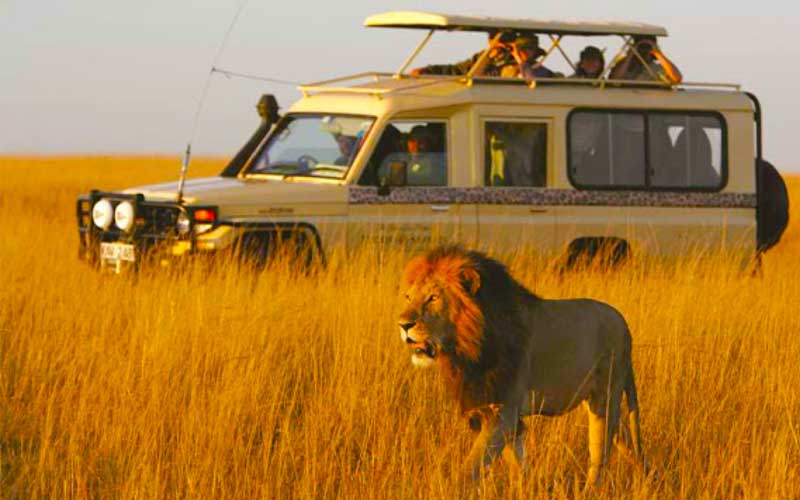
Plan your Safari experience
Check out these amazing deals on epic safari experiences now.
Safari Packing List Tanzania
Before you start packing, the first thing to consider is the ideal time of year you want to visit Tanzania.
Best Time to Visit Tanzania
Overall, the best and most popular time to visit Tanzania is generally from mid-June to October. This is because travelling conditions are good, and you can do more seasonal tours and specialised activities, unlike during the wet season.
What to Expect with the Weather
While average temperatures don’t change drastically throughout the year, the Tanzanian climate is notably marked by a dry and wet season.
Dry Season
As East Africa’s dry season, this time of year has the most predictable weather and provides ideal safari conditions.
While early mornings and evenings might be cold, the temperature during this season is fairly predictable. Thermometer readings are often around 23°C/73°F, reaching a high of 28°C/82°F in the coastal areas.
Wet Season
The dry Tanzanian landscape is transformed into a lush, green wonderland during the wet season. Temperatures increase and usually range between 24°C/75°F and 27°C/81°F, reaching highs of 30°C/86°F further down the coast.
There are two types of rainy periods in this season:
- Short rains - November to December
- Long rains - March to April
Short rains are characterised by afternoon thunderstorms, which take place often.
Long rains are characterised by hot and humid conditions. The long rains usher in the peak of the wet season.
Read more on the best time of year to visit East Africa.
General Checklist
No matter the length of your trip, you need only to pack a few of each of the following items (discussed in more detail below).
Most accommodation options in Tanzania have laundry facilities available and if you’re camping, safari clothes are durable enough to handle a rough hand wash.
Clothing and Shoes
- Comfortable short-sleeved shirts for men and women
- Comfortable long-sleeved shirts for men and women
- Long trousers for men and women
- Simple, lightweight safari shoes for walking and hiking
- Shorts for men and women
- A dress or smart top if you feel like dressing up at night
- Underwear, including sports bras for women
- Unisex windbreaker or rain jacket
- Warm jacket or fleece jacket
- Scarf
- Swimsuits for men and women
- Unisex hat
- Socks
Bags and Daypack
- 80-90L duffle bag
- 20-30L day pack
- Travel bag organisers (optional)
General Accessories
- Baby wipes
- Sunscreen
- Insect repellent
- General medication (Imodium, Paracetamol)
- Sunglasses
- Reusable water bottle
Technology
- Camera
- GoPro (optional)
- Power bank
- Spare batteries and camera memory card
- Travel adaptor
Other Bits and Bobs
- Zip-lock bags for important possessions (passport, money, phone, etc.)
- Passport, visa, insurance, yellow fever card (if applicable)
- Small lock for your duffle bag (essential)
- Binoculars
Now, let's elaborate on some of these essential packing items like clothing, insect repellant, baggage and technology to bring on your Tanzanian holiday.
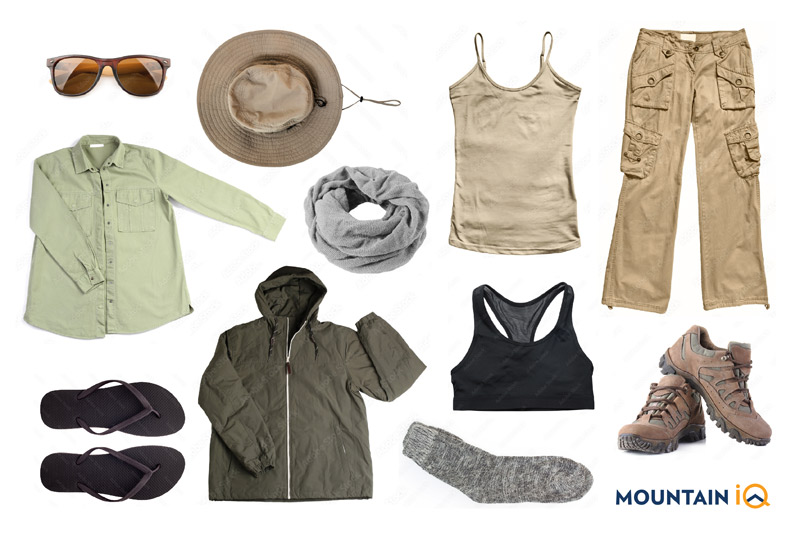
Clothing – Comfort, Layering and More
If there are two words you need to keep in mind when packing for a safari, it’s comfort and colour.
Breathable, moisture-wicking clothes are ideal for safaris and play an essential role in making the process of layering work.
At most lodges, there is also rarely a dress code (most people go straight to dinner after their afternoon safari) so packing in smart clothes is a nice-to-have but not a necessity.
For specific recommendations, see our guide to safari clothing.
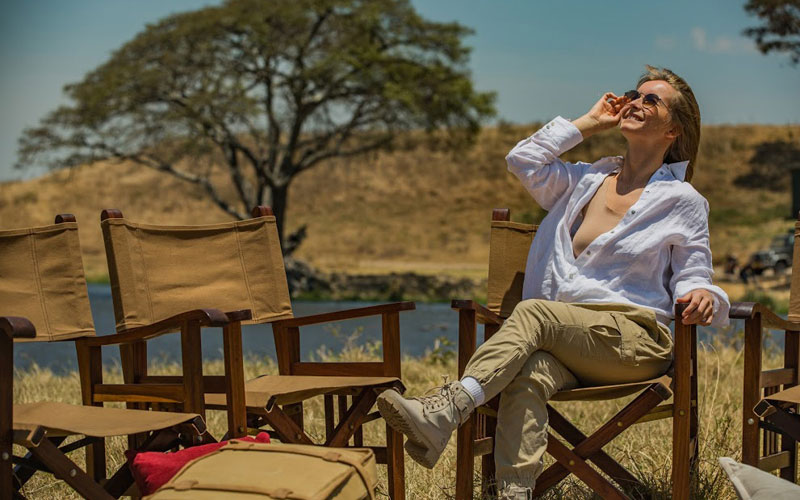
Insect Repellent
Besides choosing the right clothing colour, another way to ward off unwanted creepy crawlies is through Insect Shield – clothes that have been treated to bind permethrin into the fabric.
Instead of having to worry about applying repellent, your garments act as the insect guard themselves.
If you’d prefer opting for the budget-friendly option, then there are two things you need to add to your packing list: permethrin and a DEET-based repellent.
Permethrin is used to treat your clothing as a spray and can be found at most outdoor stores. A major plus of permethrin is that it lasts through multiple washes – six washes or six weeks to be exact (whichever comes first).
Deet-based repellent is used directly on your skin. Deet wipes make the insect-repelling process effortless and provide easy on-the-go protection.
Which tour? Here are 5 Serengeti safari tours I highly recommend:
- Group Camping Safari that includes Tarangire and Ngorongoro (4 days)
- Budget Serengeti Safari (5 days)
- Scenic Northern Tanzania Safari (7 days)
- Serengeti Trail that includes Ngorongoro (8 days)
- Best of Kenya and Tanzania (incl. 6 national parks) (12 days)
See more Serengeti safari deals.
Bag and Safari Carry On
There are two types of bags you need to have for your safari – a duffel bag and a daypack or a safari carry on.
Duffel Bag
When it comes to choosing the right luggage for safari, it is easier to travel with a soft duffel bag than a hard suitcase.
As everyone’s gear gets piled up in trucks and squeezed into small, chartered flights, duffel bags make the trip easier for everybody.
Generally, a duffel bag that exceeds an 80-litre capacity is the best to opt for. Make sure it has a strong zipper system that is not susceptible to breaking and can be easily locked.
Take a small lock to secure your bag. Another thing to look out for is a hand and shoulder strapping system to provide extra versatility.
The REDCAMP Extra Large Duffel is a great quality 96L duffel bag that is perfect for safari trips. It is super durable and decently water-resistant.
It comes with loads of storage and is equipped with three outside pockets and an interior pocket that the duffel bag folds into when not in use. In terms of value for money, the REDCAMP Duffel is hard to beat.
The North Face Base Camp Duffel is something that will never let you down, but it comes at the hefty cost of paying for the North Face brand.
It is available in five sizes, but if you decide to go with the North Face duffel, we would recommend the Large version.
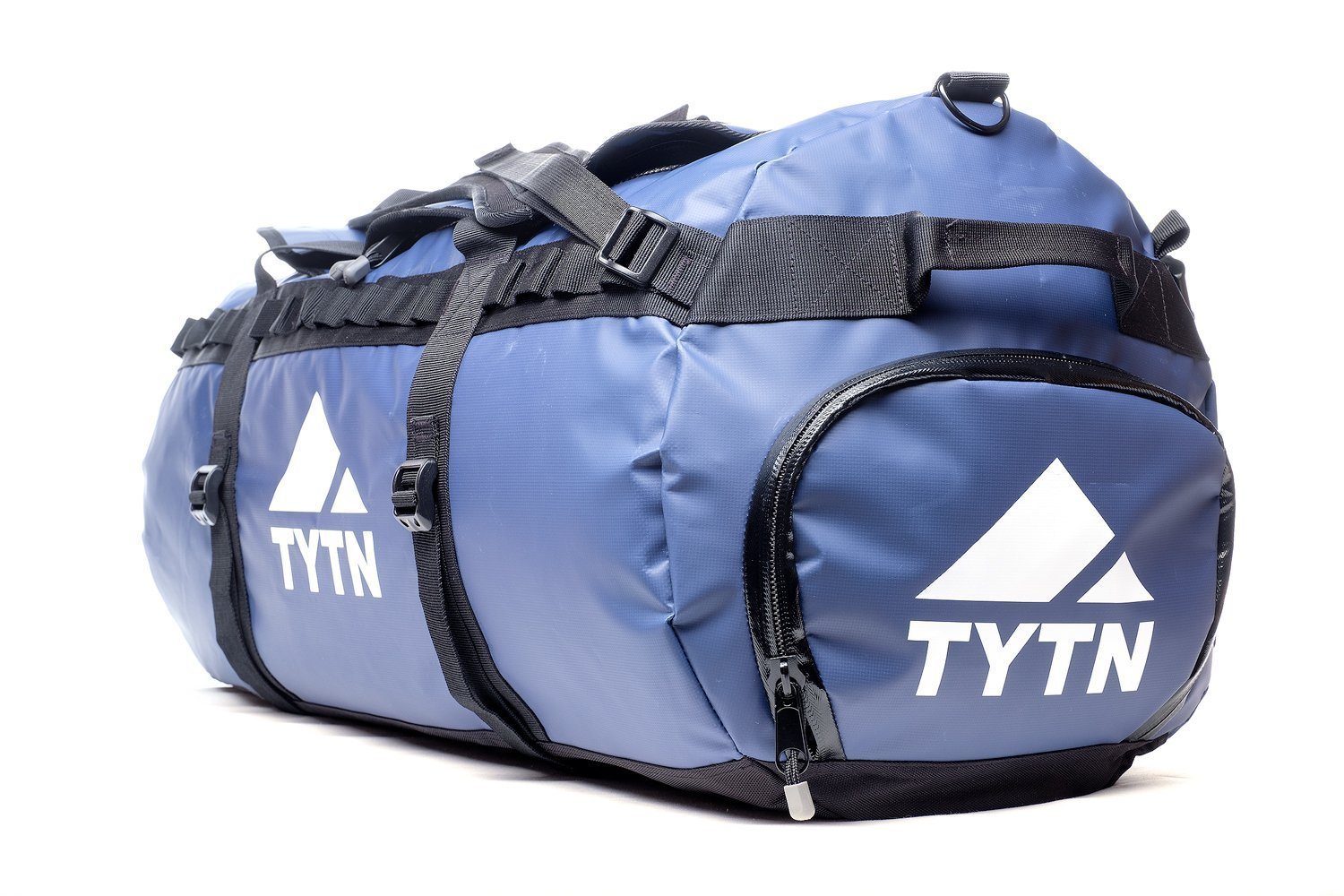
Safari Daypack
In addition to your duffle bag, you’ll need to bring a daypack.
In your daypack, you should keep all important (sunscreen, sunglasses, snacks, water), personal (money, passport) or small breakable (camera, phone) items.
If you’re looking to invest in a good quality daypack, something like the Osprey Daylite Plus Daypack would be ideal.
If you are going with the Osprey option, it’s a good idea to also get the Osprey Packs Talon 22 Men's Hiking Backpack (Medium/Large, Ultramarine Blue) which is super reliable.
My Pro Packing Tip: Consider investing in some packing cubes. Not only do these help keep your bag as organised as possible, but are also an excellent space-saving hack.
Technology you need while visiting Tanzania
Adaptors and Chargers
While you can count on international adaptors and outlets being readily available at most new hotels, this is not often the case on safari.
A travel adaptor suitable for the country you’re travelling to is essential. There are African specific travel adaptors or universal travel adaptors that are worth investing in.
My Pro Packing Tip: Consider packing in a heavy-duty power bank, especially if you plan on using your phone to take photos and videos during your game drive or if you’re camping remotely.
Camera
While many travellers use their phones to capture their safari experience, nothing quite matches the quality produced by a good camera.
If you are passionate about photography, then you’ll find the experience of capturing the wildlife you encounter thrilling. For the best photos, you’ll definitely want to take a zoom lens of 300mm or more.
Binoculars
While binoculars are not a necessity, taking a good pair on your trip will certainly add to your safari experience. They'll come in pretty handy if you're tracking the Great Wildebeest Migration in the Serengeti.
When it comes to binoculars, an ‘all or nothing approach is the way to go. The best quality binoculars might add some weight to your suitcase, but cheaper ones will leave you disappointed.
The SkyGenius 10 x 50 Binoculars are easy to focus, reasonably priced and provide 10X magnification.

Plan your Safari experience
Check out these amazing deals on epic safari experiences now.
My Final Thoughts
And that's a wrap on my ultimate packing list for Tanzania! Now, the only thing you need to spend money and time on is enjoying a memorable trip to an East African gem.

